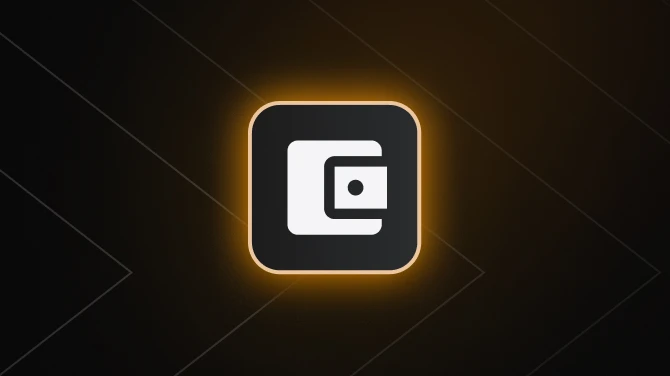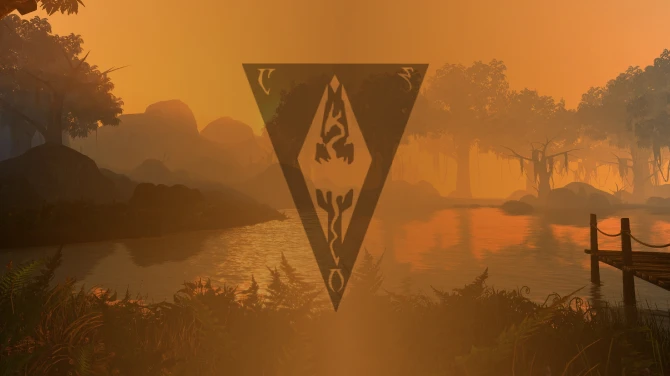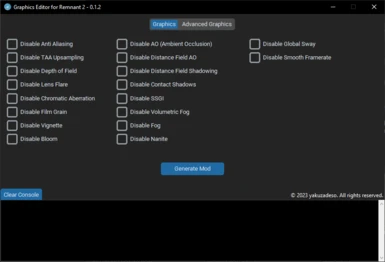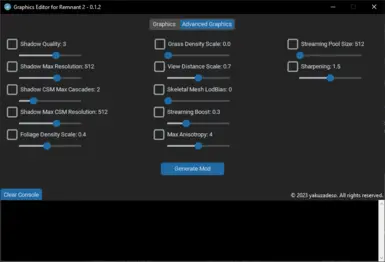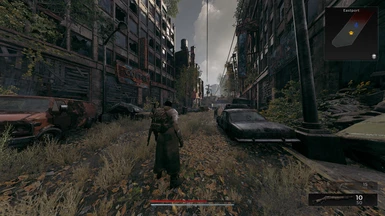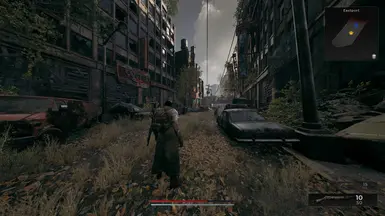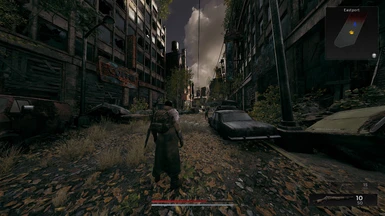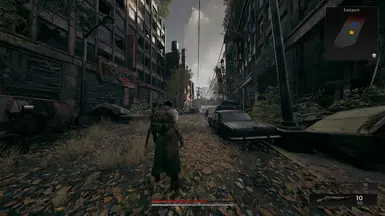About this mod
Easy to use tool to generate mod files to customize several Graphical options like TAA, Fog, Shadows, Post Processing Effects, SSGI, etc.
- Requirements
- Permissions and credits
- Changelogs
- Donations
Details for every setting at the bottom of the description.
Usage
- Download the program.
- Put it wherever you want, preferably in a folder.
- Choose whatever you want to disable by checking its checkbox. You can use the sliders after checking their checkbox.
- Press the Generate mod button. A .pak file named zCustomGraphics_P.pak will be generated where the program's .exe is.
- Put zCustomGraphics_P.pak in Remnant2\Content\Paks\~mods. If there's no ~mods folder in there, you need to create it.
- You need Allow Asset Mods to use mods with Remnant 2.
Notes
I'd appreciate it if you don't upload mods generated by the tool. I've made the tool to make life easier for end users, not for modders to get easy downloads. If you want to share your configuration you can do so by sharing a screenshot or something of your settings in the tool.
Details for every setting at the bottom of the description.
All of the sliders default to the game's default low value.
The sliders will return to their original value when disabled.
Streaming Pool Size is a placeholder for now. The game changes it dynamically. Use Custom Streaming Pool Size to set it to whatever value you want.
Values for Skeletal Mesh Lod Bias are lower for higher and higher for lower (so 0 is best quality, 2 is potato).
Settings for performance gains
Disabling everything will obviously give you the best performance.
Disabling anything related to shadows is big performance gains as well as SSGI. Virtual shadow maps are really expensive if you use shadow quality higher than low. You can mix and match all these to find a balance between performance and quality. E.g. Set Shadow CSM Max Cascades to 0, disable contact shadows, disable SSGI and Virtual shadows maps to keep some shadows enabled but boost performance.
Setting Streaming boost to 0 gave me 4-5 fps but textures become potato. You can try setting Max Anisotropy to 0 instead which doesn't affect their quality that much. As far as I can tell this game's textures are extremely high res.
You can set View distance scale to 0.4 and Skeletal Mesh lod bias to 1. Didn't notice that much difference in quality.
Disabling Anti Aliasing will boost performance but you'll notice a lot of visual noise that TAA is hiding/blending. Setting sharpening to 0 will help.
Disabling Nanite helped on my system without making that much of a difference on visuals (1060 3gb and ryzen 3600). There's a chance that Nanite is hardware dependent. I can consistently get +4 and even more fps with disabled Nanite on my system but @Chronus and @Willito report better performance with enabled Nanite.

Check out my mods
Graphics Editor Tool
Performance boost for potato pc
Disable Fog
Disable Post Processing effects
Graphics
1. Disable Anti Aliasing:
- Anti-Aliasing (AA) is a technique used to smooth out jagged edges in graphics to make them look less pixelated.
- When "Disable Anti Aliasing" is checked (set to "on"), the AA effect is turned off, which might result in sharper edges but could lead to more visible jaggies.
2. Disable TAA Upsampling:
- TAA (Temporal Anti-Aliasing) Upsampling is a technique that improves the quality of anti-aliasing by considering data from previous frames.
- When "Disable TAA Upsampling" is checked (set to "on"), the TAA Upsampling effect is turned off, which might result in a lower quality but potentially higher performance.
3. Disable Depth of Field:
- Depth of Field (DOF) is a graphical effect that blurs objects that are out of focus, simulating the way cameras work.
- When "Disable Depth of Field" is checked (set to "on"), the DOF effect is turned off, which can result in a sharper image but with less visual depth.
4. Disable Lens Flare:
- Lens Flare is an effect that simulates the scattering of light within a camera lens, often resulting in bright streaks or halos.
- When "Disable Lens Flare" is checked (set to "on"), the Lens Flare effect is turned off, which removes these light artifacts from the visuals.
5. Disable Chromatic Aberration:
- Chromatic Aberration (CA) is an effect that causes color fringing at the edges of objects in the image.
- When "Disable Chromatic Aberration" is checked (set to "on"), the CA effect is turned off, resulting in a more accurate representation of colors.
6. Disable Film Grain:
- Film Grain is an effect that adds a textured, grainy look to the graphics, simulating the appearance of traditional film.
- When "Disable Film Grain" is checked (set to "on"), the Film Grain effect is turned off, resulting in a cleaner image without the grainy texture.
7. Disable Vignette:
- Vignette is an effect that darkens the corners of the screen, directing the viewer's focus towards the center.
- When "Disable Vignette" is checked (set to "on"), the Vignette effect is turned off, resulting in a uniformly lit screen.
8. Disable Bloom:
- Bloom is an effect that adds a soft, glowing appearance to bright areas, often making them appear more intense and radiant.
- When "Disable Bloom" is checked (set to "on"), the Bloom effect is turned off, resulting in less glow around bright objects.
9. Disable AO (Ambient Occlusion):
- Ambient Occlusion (AO) is an effect that enhances shadows in the corners and crevices of objects, adding depth to the scene.
- When "Disable AO" is checked (set to "on"), the AO effect is turned off, potentially leading to a flatter-looking scene.
10. Disable Distance Field AO:
- Distance Field AO is an advanced version of AO that uses distance fields to calculate more accurate shadows.
- When "Disable Distance Field AO" is checked (set to "on"), the Distance Field AO effect is turned off.
11. Disable Distance Field Shadowing:
- Distance Field Shadowing is a technique that enhances the shadows cast by objects in the distance.
- When "Disable Distance Field Shadowing" is checked (set to "on"), the Distance Field Shadowing effect is turned off.
12. Disable Virtual Shadow Maps:
- Virtual Shadow Maps are an alternative technique for shadow rendering in certain scenarios.
- When "Disable Virtual Shadow Maps" is checked (set to "on"), the Virtual Shadow Maps effect is turned off.
13. Disable Contact Shadows:
- Contact Shadows are a type of shadowing effect that enhances the realism of objects when they touch or are in close proximity to other surfaces.
- When "Disable Contact Shadows" is checked (set to "on"), the contact shadow effect is turned off, which may reduce visual realism but could lead to a performance improvement.
14. Disable SSGI:
- SSGI (Screen Space Global Illumination) is a technique that improves the realism of lighting and shadows in the scene.
- When "Disable SSGI" is checked (set to "on"), the SSGI effect is turned off, which may reduce the quality of lighting.
15. Disable Volumetric Fog:
- Volumetric Fog is a rendering technique that adds realistic fog effects to the environment, enhancing depth and atmosphere.
- When "Disable Volumetric Fog" is checked (set to "on"), the Volumetric Fog effect is turned off, resulting in less atmospheric fog.
16. Disable Fog:
- Fog is a more basic version of volumetric fog that adds a simple fog effect to the scene.
- When "Disable Fog" is checked (set to "on"), the Fog effect is turned off.
17. Disable Nanite:
- Nanite is a cutting-edge virtualized geometry technology used for rendering highly detailed 3D models, such as characters and environments, in real-time.
- When "Disable Nanite" is checked (set to "on"), the Nanite rendering technology is turned off, which may lead to a reduction in the level of detail and visual complexity of highly detailed models.
- Disabling Nanite can help improve performance on hardware that may struggle to handle the computational demands of rendering extremely detailed assets.
18. Disable Global Sway:
- Global Sway is an effect that adds subtle swaying or motion to the environment, giving it a more dynamic feel. Most noticeable when aiming (right-click) without moving/moving the mouse.
- When "Disable Global Sway" is checked (set to "on"), the Global Sway effect is turned off, resulting in a more static environment.
19. Disable Smooth Framerate:
- Smooth Framerate, also known as Adaptive Frame Rate, allows the frame rate to dynamically adjust based on the system's performance.
- When "Disable Smooth Framerate" is checked (set to "on"), the adaptive frame rate feature is turned off, which may result in a more consistent but potentially lower frame rate.
- Enabling smooth framerate can provide a smoother gaming experience, especially on varying hardware, but it may lead to slightly more variable frame rates.
Advanced Graphics
1. Shadow Quality:
- This slider controls the quality of shadows in the graphics.
- Range: From 0 to 5, with 5 being the highest quality.
- When adjusted, it affects the resolution and accuracy of shadows, impacting visual fidelity and performance.
- Higher values result in better-looking shadows but may require more computational resources.
2. Shadow Max Resolution:
- This slider controls the maximum resolution of Shadows.
- Range: From 64 to 2048, with 2048 representing the highest resolution.
- Increasing this value improves the visual quality of shadows but may impact performance.
3. Shadow CSM Max Cascades:
- This slider controls the maximum number of cascades used in Cascaded Shadow Maps (CSM).
- Range: From 0 to 10, with higher values providing more detailed shadows at the cost of performance.
- CSM is a technique to render shadows for distant objects with multiple levels of detail.
4. Shadow Max CSM Resolution:
- This slider controls the maximum resolution of Cascaded Shadow Maps (CSM) for distant objects.
- Range: From 64 to 2048, with 2048 representing the highest resolution.
- Increasing this value improves the visual quality of shadows for distant objects but may impact performance.
5. Foliage Density Scale:
- This slider adjusts the density of foliage (e.g., trees, plants) in the scene.
- Range: From 0.0 to 1.0, with 1.0 representing the highest foliage density.
- Lowering the value reduces the number of visible foliage elements, potentially improving performance.
6. Grass Density Scale:
- This slider controls the density of grass in the environment.
- Range: From 0.0 to 1.0, with 1.0 representing the highest grass density.
- Lowering the value reduces the amount of grass visible in the scene, which can positively impact performance.
7. View Distance Scale:
- This slider adjusts the rendering distance of objects and elements in the scene.
- Range: From 0.4 to 1.0, with 1.0 representing the maximum view distance.
- Decreasing the value reduces the distance at which objects are rendered, potentially improving performance.
8. Skeletal Mesh LodBias:
- This slider controls the Level of Detail (LOD) bias for skeletal meshes (e.g., character models).
- Range: From 0 to 2, with 2 being the lowest level of detail.
- Increasing the value may reduce the visual complexity of characters at a distance to enhance performance.
9. Streaming Boost:
- The "Streaming Boost" slider controls the global boost level for texture streaming in the game.
- Texture streaming is a technique used to dynamically load and unload textures based on their visibility and importance in the game world.
- With this slider, you can adjust the boost level, which affects the desired resolution of textures during streaming.
- Range: From 0 to 1, with higher values increasing the desired texture resolution and potentially improving the quality of streamed textures.
- However, setting higher values may also lead to longer initial loading times and increased resource usage.
- Lower values reduce the desired resolution, which can help optimize memory and processing requirements during texture streaming.
10. Max Anisotropy:
- This slider controls the level of anisotropic filtering applied to textures to improve visual clarity.
- Range: From 0 to 8, with higher values providing crisper textures at oblique angles.
11. Streaming Pool Size:
- Placeholder.
12. Sharpening:
- This slider controls the level of post-processing sharpening applied to the graphics.
- Range: From 0 to 3, with 1.5 being the default value.
- Increasing the value adds post-processing sharpening to enhance image details.






